
Jupiterimages/Photos.com/Getty Images
Toughness is less of an issue with pork than with most other meats, but cuts from the shoulder and leg can still be rather chewy at times. Those muscles are well-used while the animal is alive, and that makes them relatively dense and chewy. Well-used muscles also develop lots of reinforcement in the form of tough connective tissue, compounding the problem. Several ways exist to tenderize even the toughest cuts, with freezing perhaps being the oddest.
Freezing and Tenderizing
Naturally occurring fluid fills the muscle tissues of pork and other meats, which keep the cells plump and your roast juicy. They're mostly made of water, and like any other watery liquid, these fluids expand when they're frozen. That can rupture the cell walls and help break down the structure of the muscle fibers. The effect is well known among seafood lovers, who often favor frozen squid or octopus over their fresh counterparts precisely because of this tenderizing effect. Unfortunately, it's more problematic with larger cuts such as pork roasts.
The Downside
The downside to freezing as a tenderizer is that it relies on the rupturing of cells for its effect. A more immediate and dramatic result of that rupturing is the loss of fluids in your roast. The juices released by the frozen and thawed pork run out of the roast, either as it thaws in your refrigerator or -- if you cook from frozen -- in the roasting pan. The pan juices evaporate during cooking and give you lots of concentrated flavor, but overall the likelihood of a dry and unappealing roast is unhappily high.
In and Out
If you're roasting the frozen pork, there's a further complication. Heat from the oven only reaches the outside of the roast, and from there it conducts to the inside through the pork itself. Meat, unfortunately, is a poor conductor of heat. By the time enough warmth reaches the center of your roast to thaw it and let it begin cooking, the outer edges are almost certain to be overcooked. When the center reaches a food safe temperature of 145 degrees Fahrenheit, that band of overcooked pork can account for most of the weight of the roast.
Some Strategies
If you want to try cooking a roast from frozen, be selective. A relatively flat roast cut from the leg or shoulder is better than a round or football-shaped roast because the oven's heat will penetrate more quickly and easily. Bone conducts heat better than flesh, so use a bone-in roast if possible. If you're not wedded to roasting, consider treating it as a pot roast instead. Cooking your piece of shoulder in broth or sauce speeds the transfer of heat, and the cooking liquid helps keep the outer portions of your roast moist.
Related Articles
Why Does My Pork Roast Come Out Dry?

How to Store Leftover Roast Pork

How Long Can You Freeze a Roast?

Food Safety Tips for Frozen Pork

How to Make a Blackbuck Antelope Roast
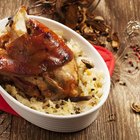
How to Cook Knuckle Roast

How to Cook a Large Amount of Corned ...
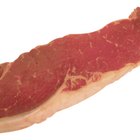
The Difference Between a Sirloin Roast ...
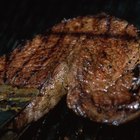
How to Defrost a Steak and Keep It ...
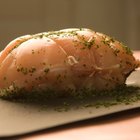
How to Braise Pork

How to Cook a Beef Roast Over an Open ...
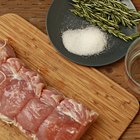
How to Brine Pork Roast

How to Defrost a Frozen Beef Roast in ...

How to Marinate a Top Round Roast

Can I Cook a Roast Beef for Three Hours ...

What Are the Temperatures for Slowly ...

Can I Make a Roast From a Frozen State?
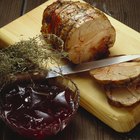
How to Know When Pork Roast Goes Bad
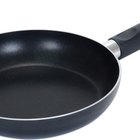
How to Cook Beef Top Round Pot Roast
How to Slow Cook a Pot Roast With Beef ...
References
- On Food and Cooking: The Science and Lore of the Kitchen; Harold McGee
- Pork -- Be Inspired: Be 145 F
Writer Bio
Fred Decker is a trained chef and prolific freelance writer. In previous careers, he sold insurance and mutual funds, and was a longtime retailer. He was educated at Memorial University of Newfoundland and the Northern Alberta Institute of Technology. His articles have appeared on numerous home and garden sites including GoneOutdoors, TheNest and eHow.
Photo Credits
Jupiterimages/Photos.com/Getty Images